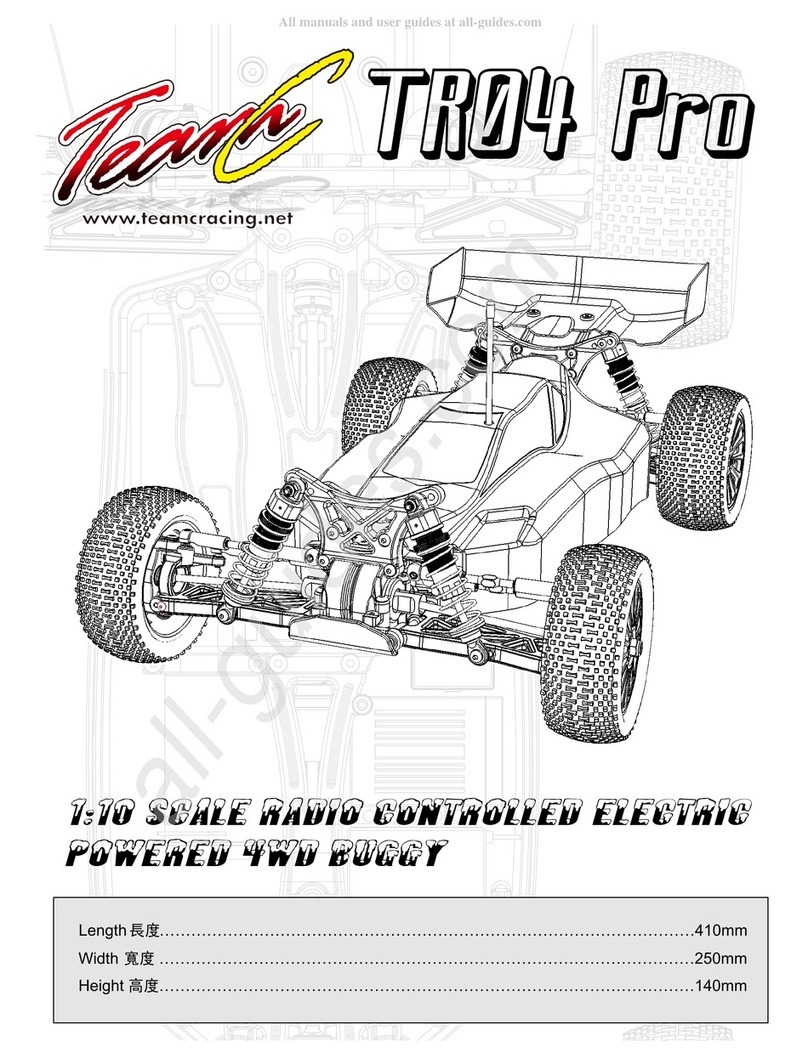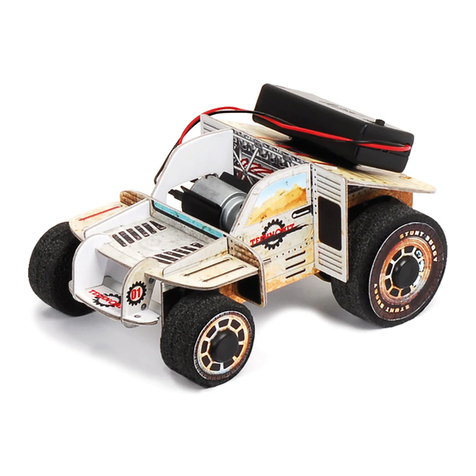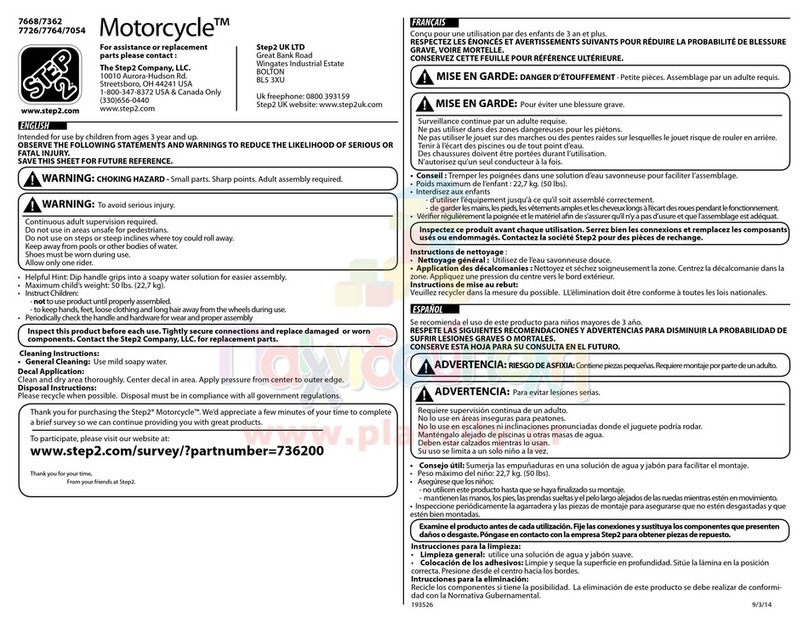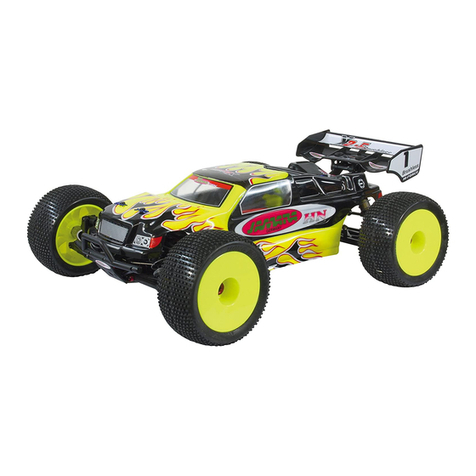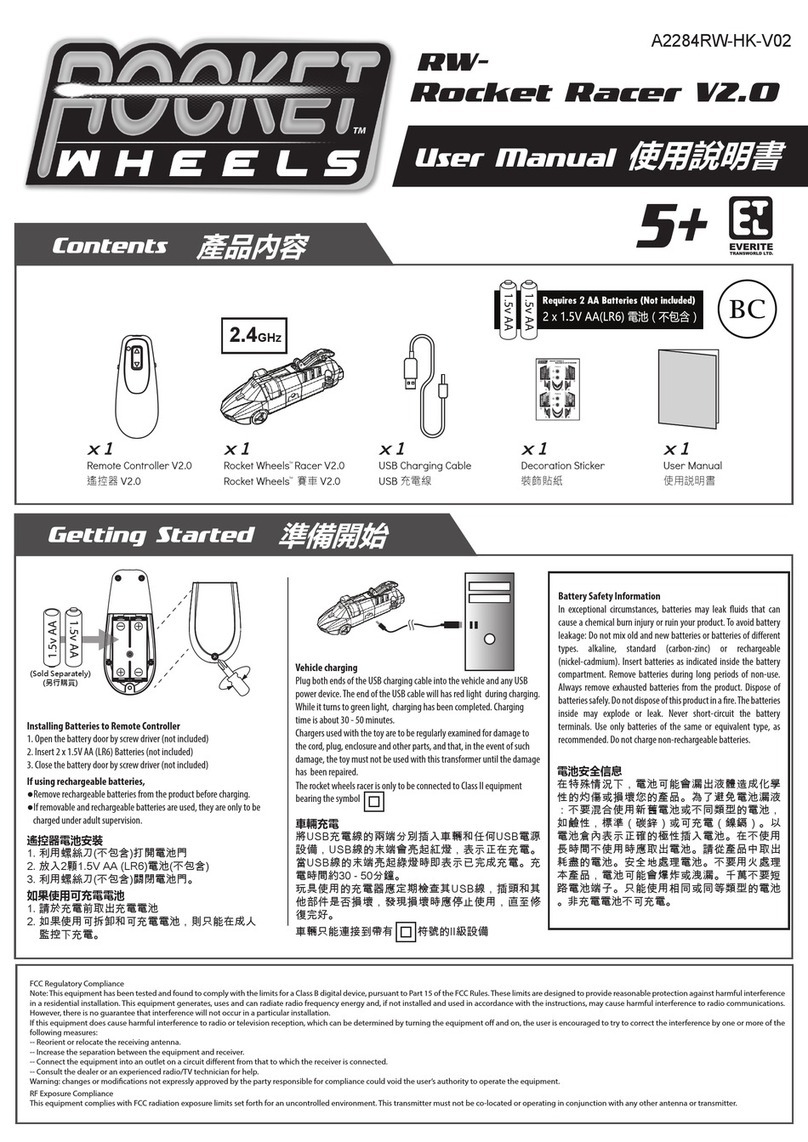Flexfoil Buggy User manual

IMPORTANT:
THIS INSTRUCTION MANUAL CONTAINS IMPORTANT SAFETY INFORMATION. YOU MUST
READ AND UNDERSTAND THESE INSTRUCTIONS BEFORE ASSEMBLING YOUR BUGGY.

1
BUGGY INSTRUCTIONS
Thank you for purchasing your new Flexifoil buggy. If operated and looked after
properly, your new buggy will serve you well. Before assembling and using this
buggy, you must take time to read and understand the following instructions
and safety warnings.
IMPORTANT: THIS BUGGY HAS BEEN DESIGNED FOR KITE TRACTION
ONLY AND NO OTHER MEANS OF PROPULSION SHOULD BE USED.
SAFETY FIRST:
KITE TRACTION ACTIVITIES, INCLUDING KITE BUGGYING, ARE
EXTREME SPORTS, WHICH CAN BE BOTH EXHILARATING AND
DANGEROUS. YOU MUST READ AND ABIDE BY THE FOLLOWING
SAFETY WARNINGS TO ENSURE THAT YOU HAVE A GREAT KITE
BUGGYING EXPERIENCE.
SAFETY WARNINGS:
GENERAL:
Read all instructions and safety guidelines before using Flexifoil products
Use extreme caution when using kite traction equipment. Improper use of this
equipment can cause injury or death.
Traction kites are not parachutes or paragliders and must not be used as such.
Do not use this buggy under the influence of alcohol or mind-altering drugs.
LEARNING:
Do not attempt to kite buggy until you have mastered control of your
traction kite.
Beginners should learn to kite buggy in lighter winds or seek tuition from
an authorised instructor.
WEATHER CONDITIONS:
Never use your buggy in conditions that are too extreme or winds that are too strong
for your skill level or your equipment.
Never kite buggy if you cannot safely handle the power of your kite. Use a
smaller kite or wait for lighter wind.
Gusty winds can cause difficulties for the inexperienced flier.
Wait for steady (clean) winds.
-
-
-
-
-
-
-
-
Safety
-

2
BUGGY INSTRUCTIONS Safety
LOCATION / SITE ASSESSMENT:
Do not kite buggy near overhead power cables, roads, airports, cars, railways,
people or animals.
Always behave in a responsible manner and respect other site users.
Always select a buggy site free from people and obstacles and dangerous items
such as broken glass. Stay away from unsecured kites and lines on the ground as a
kite can re-launch itself at any time. Disable your kite and lines on the ground when
not in use.
Never kite buggy on congested beaches and fields or where your activity could
injure someone.
Respect nature. Don’t leave any rubbish behind.
Always maintain plenty of clear space around you in all directions. A kite can pull
you down wind for a considerable distance.
Make sure you have permission from the site owner, if applicable.
EQUIPMENT:
You must always check all your equipment (buggy, kite, lines, harness, safety gear
etc.) before using it. Do not kite buggy with worn or damaged lines or equipment.
Repair or replace accordingly.
Always kite buggy with the appropriate safety equipment (helmet, knee and
elbow pads, strong shoes, suitable eyewear, gloves etc.). Never attach yourself
permanently to the kite.
Kite lines and bridles under tension can cut like a knife and can cause serious injury
or death. Always keep your kite lines away from people, animals and other buggy
pilots.
Never allow inexperienced kite fliers to use your equipment.
Remember you are responsible for the safe operation of your kite, buggy and
equipment. Use common sense.
INSURANCE:
We strongly recommend you take out a third party liability insurance that covers kite
buggying.
-
-
-
-
-
-
-
-
-
-
-
-
-

3
BUGGY INSTRUCTIONS Box Contents
Your buggy box should contain the following parts. If the box is not complete
contact your dealer immediately.
A bag containing the following:
1 stainless steel bolt with large flat washer for the front fork
2 stainless steel bolts with self-locking nuts for the foot-pegs
2 stainless steel bolts with self-locking nuts for connecting the
side frames to the down-tube.
2 stainless steel bolts with self-locking nuts for securing the side
tubes to the rear axle.
2 hi-tensile steel bolts with spring washers for mounting both
rear wheels to the rear axle.
1 stainless steel front axle bolt with self-locking nut and two
wheel spacers.
2 adjustable spanners
1 seat
2 foot pegs
1 front fork
1 front fork down-tube with
fitted bearing bushes
1 left and 1 right side frame
1 back axle
3 wheels (un-inflated)
with fitted bearings.
1 product registration card
1 splash guard kit

4
BUGGY INSTRUCTIONS
FRONT FORK ASSEMBLY:
Fit the bolt and the washer. Tighten firmly with the spanner provided.
Insert the front foot-pegs into the front fork lugs. Insert the bolts from the top.
Secure the bolts with the nuts, but do not over tighten.
Insert the front fork stem into the down tube bushes. Make sure that you have the down tube
the right way round (see picture).
Assembly
1
step
2
step
3
step

5
BUGGY INSTRUCTIONS
SEAT FRAME AND REAR AXLE:
Fit the bolts from the top. Do not over tighten
the nuts.
Your side tubes and seat should now look
like this.
Ensure that each side tube also passes
through the back-rest strap.
Insert each side tube through the loop at the
front of the seat and then through both loops
on the side of the seat.
Note that there is a left and a right side tube.
Assembly
4
step
6
step
7
step
5
step
FRONT
REAR
Insert both side tubes into the rear axle
8
step
Wrap the large straps at the rear of the seat
around the rear axle and connect the buckles
together. Pull tight.
9
step

6
CONNECTING FRONT FORK DOWN-TUBE:
BUGGY INSTRUCTIONS
Fit the front fork down-tube to the frame. Hold
the clamps apart whilst inserting the down-
tube.
Wrap the straps, connected to each side of
the seat, around the side tubes TWICE. Feed
the longer of the two straps around the axle
and connect the buckles together. Pull tight.
Adjust to your preferred setting (this will
depend on how long your legs are), then insert
the 2 bolts and tighten the nuts securely.
Take the larger width strap (connected to the
bottom of the seat) around the back axle and
connect the buckles together. Pull tight.
Repeat the procedure for the small back
strap. This strap is long enough to secure a
bag / kite behind your seat.
Assembly
10
step
13
step
11
step
step
12
step
14
SECURING THE SEAT TO THE FRAME:
Make sure all seat straps are tight and look
like this.
step
15

7
BUGGY INSTRUCTIONS
INFLATING AND MOUNTING THE REAR WHEELS:
Inflate the wheels but care should be taken when doing so. Before inflation, ensure that the inner tube is
completely inside the tyre and that the valve points straight through the valve hole in the rim. Inflate the tyre
a little and check for alignment of the tyre on the rim. Ensure the tube is not caught between the tyre and
rim. Inflate to your preferred pressure but do not exceed 1.7 Bar (25 psi.)
Note:
Tyre pressure can be lowered to increase the footprint when using your buggy on very soft sand. On
hard surfaces like tarmac (blacktop) and hard sand, it is recommended that you inflate your tyres to the
maximum pressure.
Fit each wheel to the rear axle by inserting the axle bolt (with the spring washer in place on the outside
of the wheel) through the centre of the wheel. The axle bolt goes through both bearings and the internal
spacer. If this spacer is not aligned correctly, shake the wheel or use a long thin object to push it into place.
Screw the wheel assembly into the rear axle and tighten securely with the spanner provided. Make sure
that both the bolt and the internal thread of the axle are clean and free of sand to avoid damage and cross-
threading.
Slide the front axle bolt
through one side of the front
fork and fit one wheel spacer
on the inside.
MOUNTING THE FRONT WHEEL:
Fit the nut and tighten
securely. Finally check that
all bolts and straps on your
buggy are secure.
Hold the wheel in position
and push the axle bolt
through the wheel. Fit the
remaining spacer.
Assembly
16
step
19
step
17
step
18
step

8
BUGGY INSTRUCTIONS Assembly
Your buggy should look like this and is now ready for use :

9
BUGGY INSTRUCTIONS Assembly
FITTING THE SPLASH GUARD:
This kite buggy comes with a splash guard. This is designed to deflect most water and dirt whilst buggying.
However, it is still advisable to wear protective clothing when buggying in wet conditions. Please follow the
simple instructions below.
Place hole in splash guard
over ‘steering stop’. Wrap
shorter velcro strap around
front fork.
Push flap into downtube.
Wrap longer velcro strap
around front fork and
secure. Make sure strap is
tight and then thread strap
through loop.
3
step
1
step
2
step
Make sure the flap is secure. Your fitted splash guard
should look like this.
Hook clips onto seat straps
on both sides of the buggy.
6
step
4
step
5
step

10
BUGGY INSTRUCTIONS
CARE AND MAINTENANCE:
Taking good care of your buggy will ensure it has a long and trouble free life.
We suggest that you take note of the following maintenance tips:
FRAME:
The frame is made of durable stainless steel and is virtually maintenance free. However,
if your buggy is muddy or has been used on the beach in salt water conditions, we
recommend that you hose it down thoroughly with fresh water at the end of the day.
Inspect the frame for damage and cracks periodically. Do not attempt to repair frame
damage yourself, contact your local dealer or Flexifoil International for advice.
SEAT:
The seat can be hosed down at the end of the day. If it is very dirty, you can hand wash
it in warm water using a non-bleaching detergent. Allow it to completely dry naturally,
before packing it away. Check the seat for wear periodically. Repair any damage prior to
next use.
WHEELS AND BEARINGS:
Wheels and bearings will, due to their nature, wear with use. Periodically remove the
wheels from the buggy for maintenance.
The rear axle bolts are made from hi-tensile steel (not stainless). This is because stainless
steel bolts, when screwed into the stainless steel frame, can “lock up” making them
unremovable. Periodically clean the rear axle bolts to prolong life.
Hose the wheels down with fresh water and dry them thoroughly. When completely dry,
spray all bearings lightly with a Teflon based lubricant (most bicycle or motorcycle chain
sprays are suitable).
Check the plastic hub for damage and cracks. Replace the hub if damage is found.
Hubs cannot be repaired. Correct replacements can be obtained from your dealer.
Check the tyres for damage and wear. Replace worn and damaged tyres with new ones
of the correct size and type. Correct replacements can be obtained from your dealer.
Bearings should be replaced with new ones when they become worn. Wear can be
detected by spinning the wheel on the front axle bolt while holding the axle in both hands.
If the wheel is reluctant to spin freely (after lubrication) or has a lot of sideways movement,
replace the bearings. Check all wheels. Correct replacements can be obtained from your
dealer.
FRONT FORK BUSHES:
The front fork rotates in the down-tube in special hardwearing nylon bushes. It is advisable
to periodically remove the front fork from the down-tube to clean the assembly. After
cleaning, lightly spray the front fork with a Teflon based lubricant and re-assemble.
A little play in the assembly is normal, but if there is excessive wear, replace the bushes.
Replacements are available from your dealer.
OTHER ACCESSORIES AVAILABLE:
Care and maintenance, Accessories
Wide wheels Wide back axle Buggy bearing kit Foot-strap kit

Flexifoil International Limited 27 Regal Drive Soham Cambridgeshire CB7 5BE U.K.
Tel: +44 (0)1353 723131 Fax: +44 (0)1353 722311 Email: [email protected] Web: www.flexifoil.com
Version 3.0. Nov 2002
Table of contents
Popular Motorized Toy Car manuals by other brands
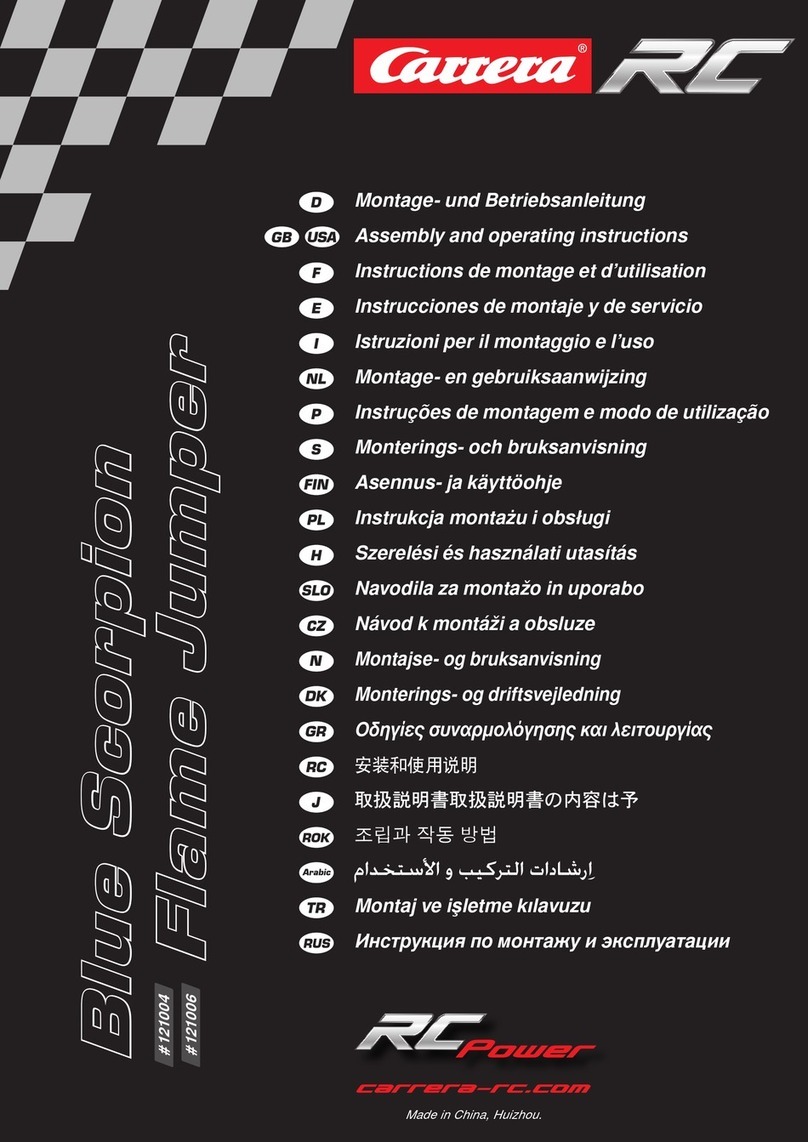
Carrera RC
Carrera RC Blue Scorpion Assembly and operating instructions
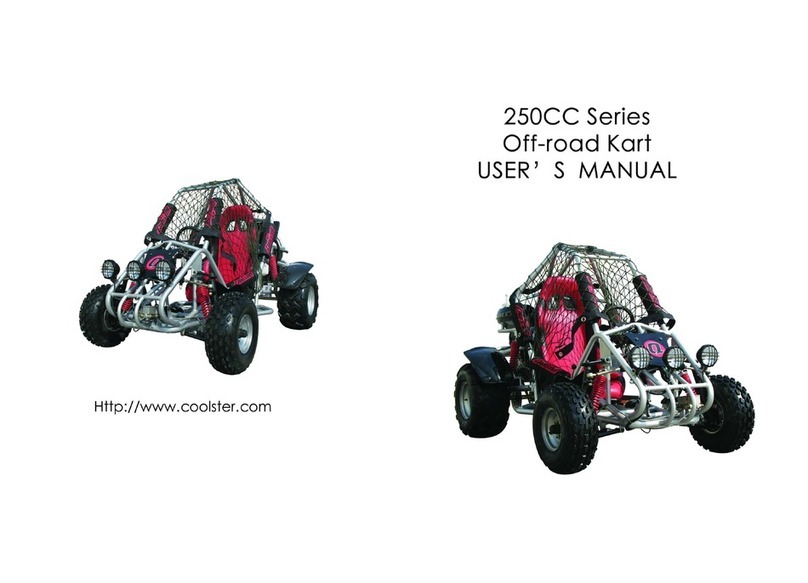
Coolster
Coolster 250CC Series user manual
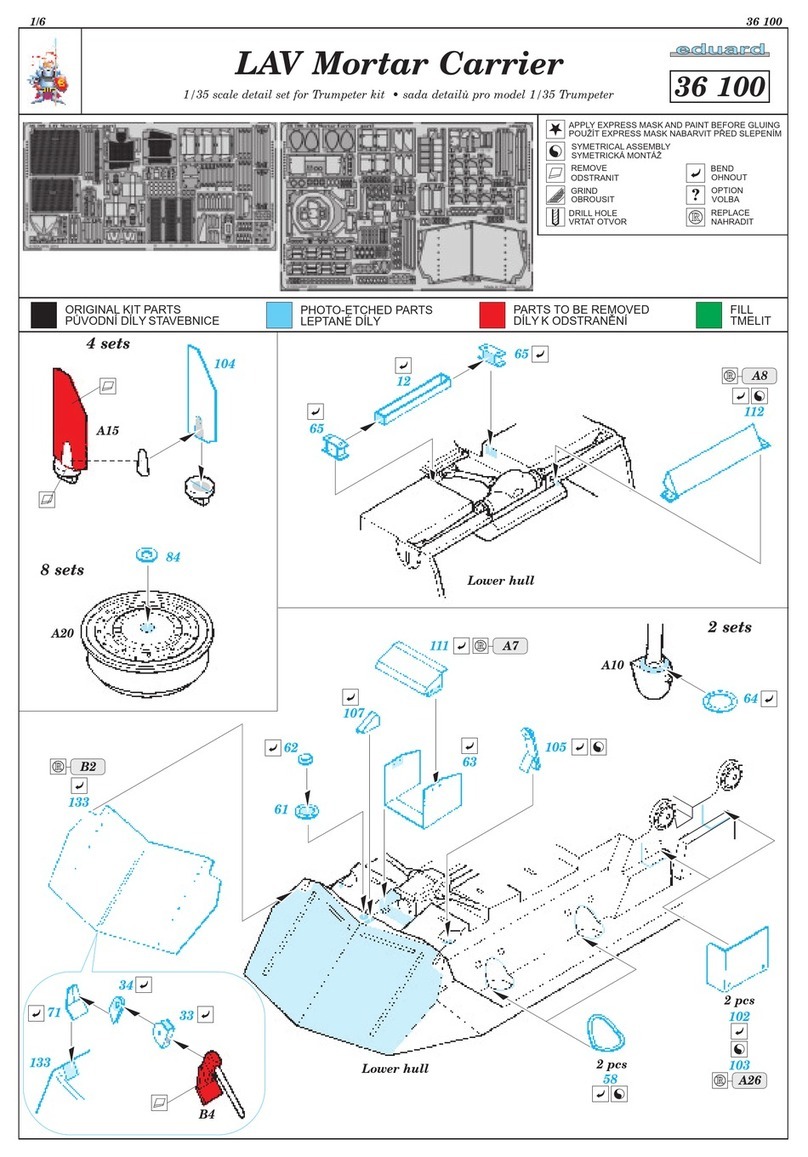
Eduard
Eduard LAV Mortar Carrier quick start guide
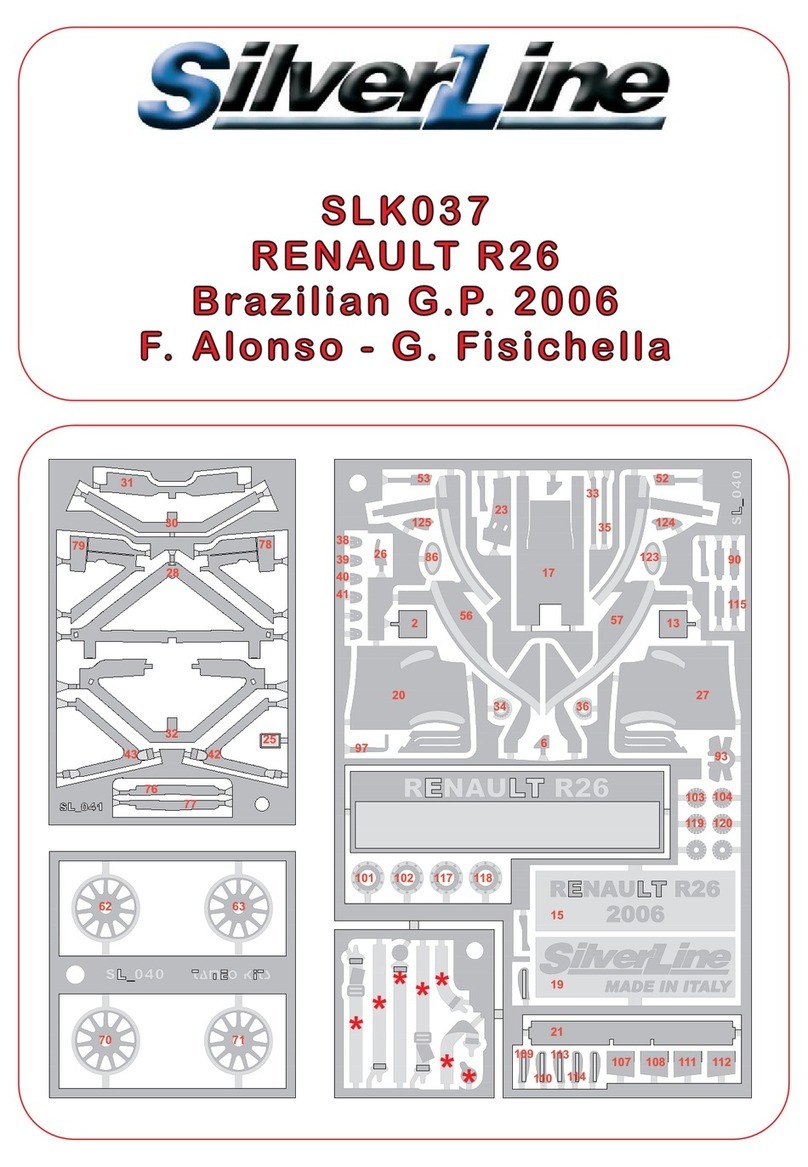
Silverline
Silverline RENAULT R26 manual
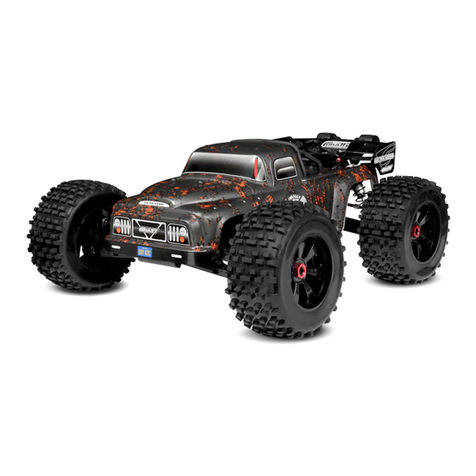
Team Corally
Team Corally Dementor C-00165 Quick start user guide
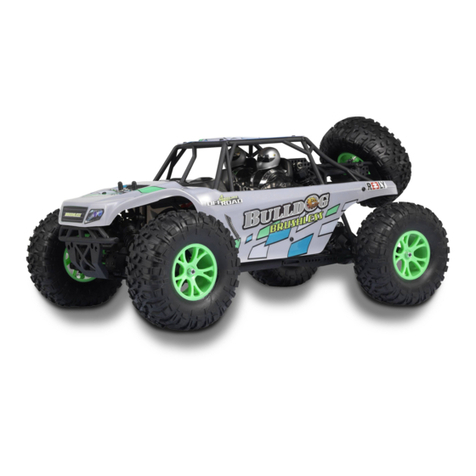
Reely
Reely Bulldog operating instructions

Ofna Racing
Ofna Racing Nexx 10SC instruction manual
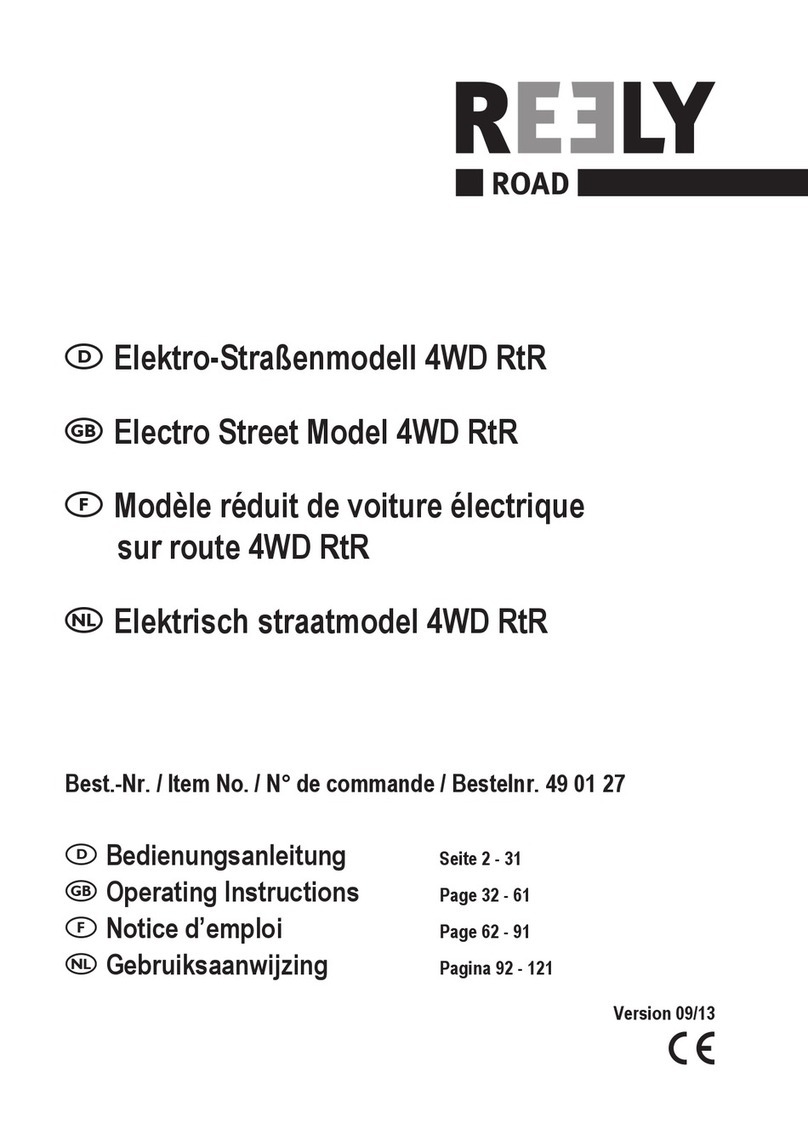
Reely ROAD
Reely ROAD Electro Street 4WD RtR operating instructions
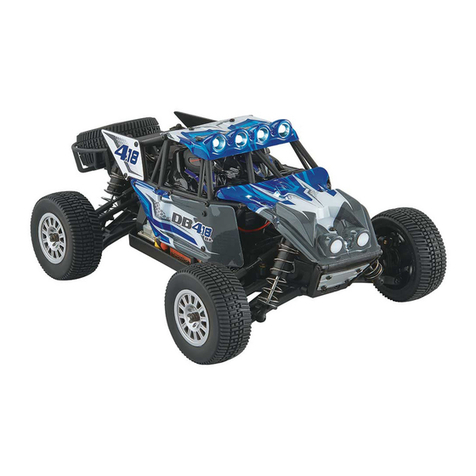
Dromida
Dromida DB4.18 BL Assembly and maintenance guide
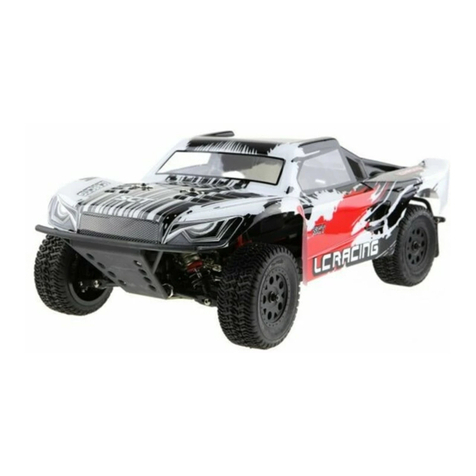
LC RACING
LC RACING EMB manual

Ansmann Racing
Ansmann Racing Mad Rat Assembly manual

battat
battat DRIVEN PICk-UP TRUCK CAMIONNETTE manual
